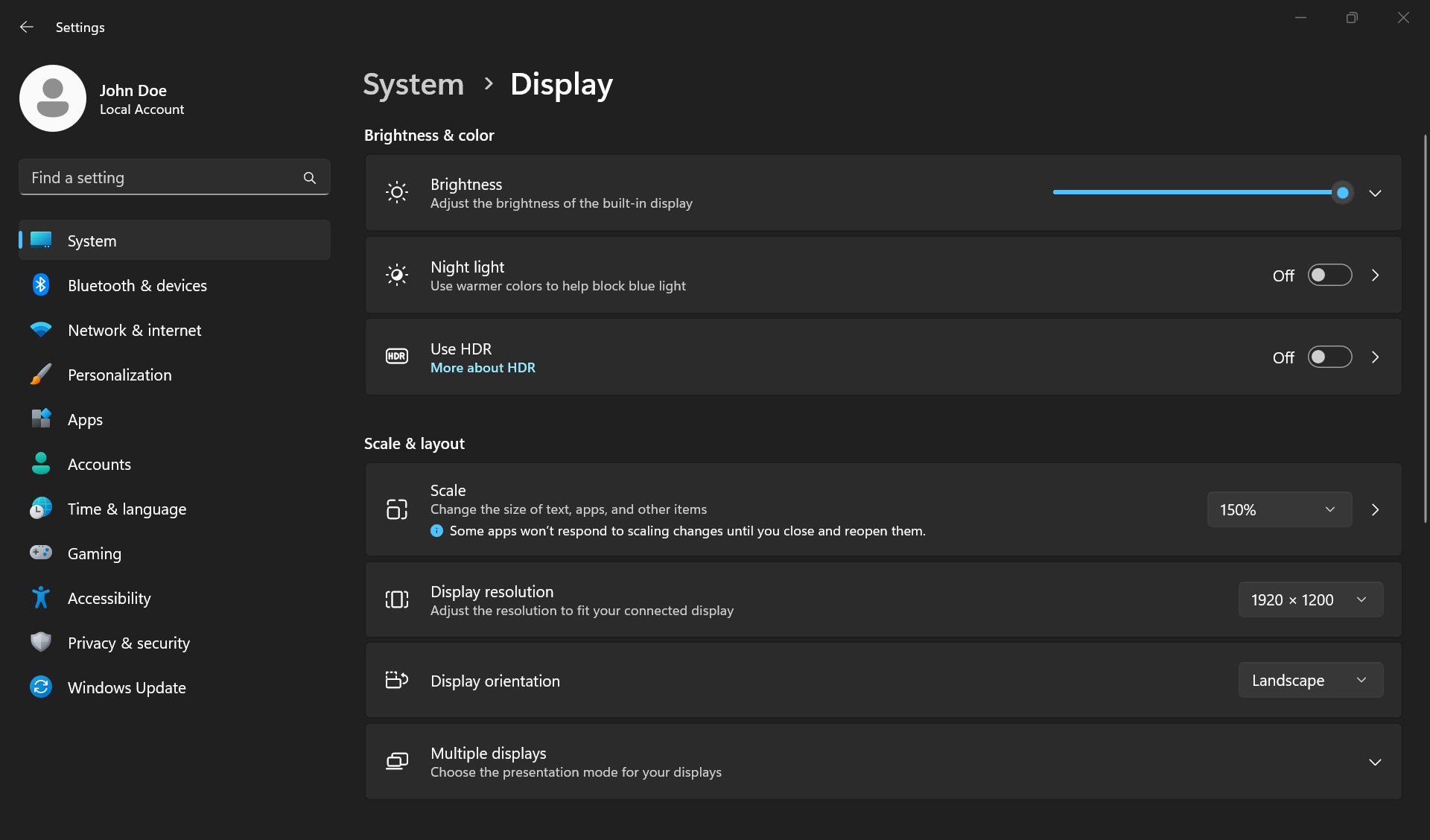Personalize Your Windows
Customizing Windows on your computer not only adds a touch of your personality but also enhances your overall user experience. You can choose your preferred desktop background or wallpaper, color scheme (including light or dark mode), fonts, and what you see in the Start menu and taskbar. Additionally, you can customize the sounds, mouse pointers, and even the lock screen image to create a unique and tailored environment that suits your preferences.
Set a custom wallpaper
To set your own wallpaper or desktop background, go to Start > Settings > Personalization > Background. You can choose a photo and choose a fit for your desktop image. You can also personalize your background to a picture, solid color, or a slideshow.

Personalize your display settings
Display settings in Windows, such as resolution, orientation, brightness, and color calibration, can be accessed through the Settings app. These settings allow you to customize your display to suit your personal preferences and optimize visual clarity. Additionally, you can also adjust the scaling and text size to ensure comfortable viewing on different screen sizes.
- Go to Start > Settings > System > Display.
- If you want to change the size of your text and apps, choose an option from the menu next to Scale.
- To change your screen resolution, use the menu next to Display resolution.
- To increase or lower the brightness of the built-in display, use the slider next to Brightness.
- To use warmer colors to help block blue light, turn on the toggle switch next to Night light. Customize the night light settings by changing the strength and set a schedule.

Microsoft Account
Your Microsoft account connects all your Microsoft apps and services. Before you decide to create a new Microsoft account, you should be aware that you might already have one. It is the account that you use to sign in to Skype, Outlook.com, OneDrive, Windows Phone, and Xbox LIVE. Check if I have a Microsoft account.
Open the Accounts settings app

Add additional users
Having different accounts on a shared device lets multiple people use the same device. Each user can have their own sign-in info, plus access to their own files, browser favorites, and desktop settings. The best way to add another user to your computer is to have them sign in with a Microsoft account.
To add a new user, go to Start > Settings > Accounts > Other users.
If you have trouble adding a Microsoft account, see the Microsoft account FAQ.

User account security
Secure your Windows login using a password, or Windows Hello features such as face recognition, fingerprint, or a PIN on supported devices.
To access your sign in options, go to Start > Settings > Accounts > Sign-in options.

Change or manage your Windows login password or PIN
To change your password or PIN, go to Start > Settings > Accounts > Sign-in options.
- Select PIN (Windows Hello), and then select Change PIN.
- Select Password and then select Change.
Windows Hello
Windows Hello lets you sign in to your device using face recognition, fingerprint, iris, or a PIN on supported devices.
To turn on Windows Hello, go to Start > Settings > Accounts > Sign-in options. Select the Windows Hello method that you want to set up and select Set up.
To turn off or remove Windows Hello, go to Start > Settings > Accounts > Sign-in options. Select the Windows Hello method that you want to remove and select Remove.
Lock your device
If you are stepping away from your device for a few minutes, it is a good practice to lock it. This helps prevent others from seeing what is on your screen or accessing anything on your device.
To lock your device, press the Windows logo key + L.

Time and language
The display language you select changes the default language used by Windows features such as Settings, File Explorer, and other applications. To manage the display language settings in Windows, follow these steps.
- Go to Start > Settings > Time & language > Language & region.
- Choose a language from the Windows display language menu, or, next to Preferred languages, select Add a language to install the one you want.
Set your time and time zone automatically, or you can set them manually in Windows. To set your time and time zone in Windows, go to Start > Settings > Time & language > Date & time. Turn on Set time automatically, or manually choose your Time zone.

Change default apps
Whether it's setting a different web browser, email client, or media player as the default option, Windows provides flexibility and convenience in tailoring the user experience to individual preferences.
Are you looking to change your default browser or other default applications? Go to Start > Settings > Apps > Default apps and set your default app preferences.
To change the default app, you can either:
- Set a default for the file type or link type. Enter the file or link type you want in the search bar and choose which app can open that file or link type.
- Set defaults for applications. Select an app to see what file or link types it can open, select the file or link type and then choose your preferred app.

Next, let us help you learn more about some software that might be preinstalled on your Windows PC.
Video Resources
After customizing Windows, let us see which Dell apps come preinstalled on your new Dell PC.
Helpful links:
If you need help to check if you already have a Microsoft Account, go to the Microsoft account help page.
If you are having trouble adding an account in Windows, go to the Microsoft Account page for help ...
